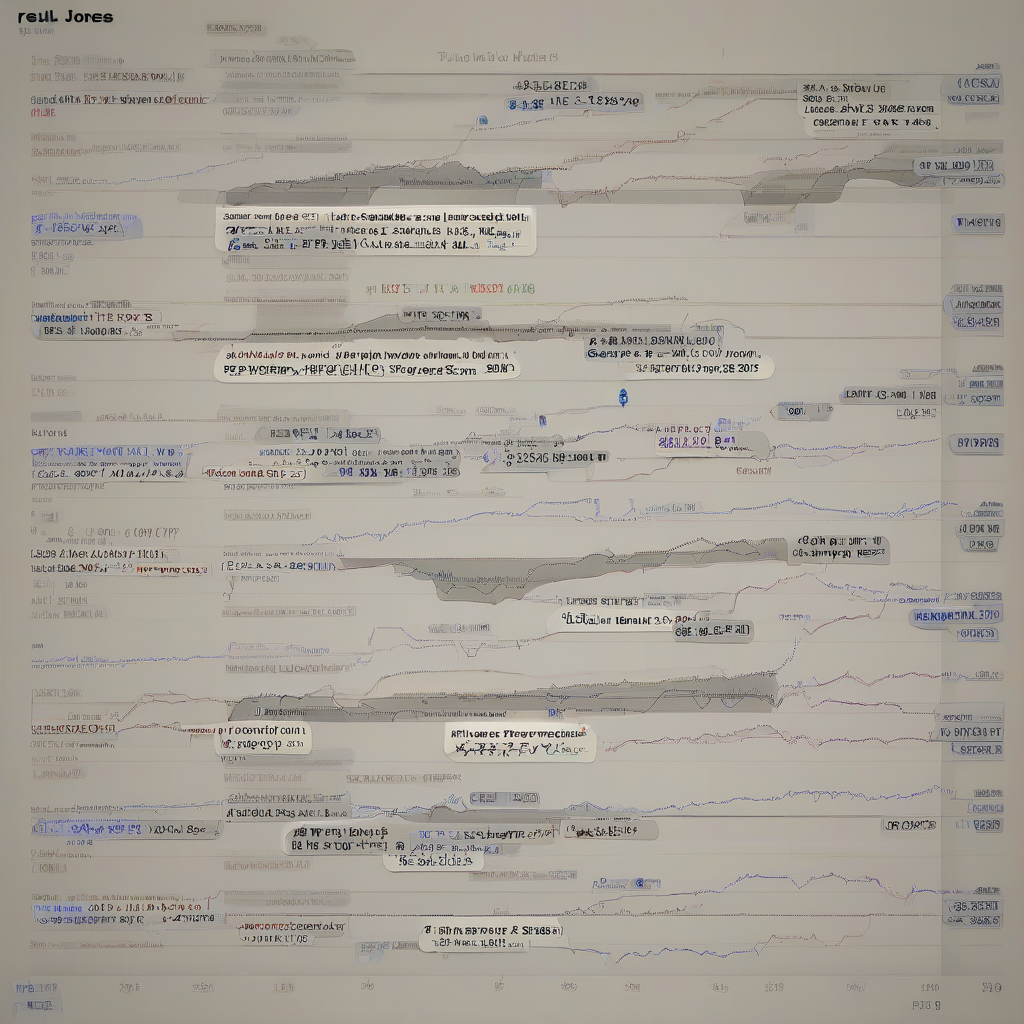Deciphering the Dow Jones Industrial Average: A Deep Dive into Market Capitalization
The Dow Jones Industrial Average (DJIA), a widely followed stock market index, often sparks discussions about its composition and, importantly, the market capitalization of its constituent companies. Understanding the relationship between the DJIA and market cap is crucial for investors seeking to grasp the index’s dynamics and the overall health of the US economy.
What is Market Capitalization?
Market capitalization, simply put, represents the total market value of a publicly traded company. It’s calculated by multiplying the company’s current share price by its total number of outstanding shares. A high market cap generally signifies a large and established company, while a lower market cap suggests a smaller or newer entity. Market cap is a dynamic figure, constantly fluctuating with changes in the share price.
The Dow Jones Industrial Average and its Components
The DJIA is a price-weighted index, meaning the influence of each component stock is directly proportional to its price. This contrasts with market-cap-weighted indexes like the S&P 500, where larger companies have a greater impact. The DJIA comprises 30 large, publicly traded companies representing various sectors of the US economy. These companies are selected by the S&P Dow Jones Indices, considered leaders in their respective industries. The selection process aims to reflect the broad American economy, while also acknowledging changes in the market’s landscape. Companies are added or removed based on factors like market performance, sector representation, and overall economic significance.
The Relationship Between DJIA and Market Cap: A Complex Dynamic
While the DJIA is not directly calculated using market capitalization, the market cap of its constituent companies is a significant factor indirectly influencing its performance. This indirect relationship is multi-faceted:
- Price Fluctuations and Market Cap Influence: A change in the share price of a DJIA component immediately impacts its market cap. A substantial increase in a high-priced company’s share price can significantly influence the DJIA’s value due to its price-weighted nature, even if the percentage change in market cap relative to the entire index is not massive.
- Sectoral Shifts and Market Cap Weighting (Indirectly): Although the DJIA is price-weighted, the overall market cap of its component companies influences the choice of which companies get included. Companies with larger market caps often have a higher chance of becoming DJIA components because they often represent leading sectors in the economy. The composition therefore indirectly reflects overall market cap trends.
- Investor Sentiment and Market Cap: Investor sentiment, often reflected in market cap changes, influences the DJIA. Positive sentiment leading to increases in market caps across multiple components could result in a DJIA surge, while negative sentiment and shrinking market caps often lead to declines.
- Economic Indicators and Market Cap: Broad economic indicators, like GDP growth or inflation, heavily influence the market caps of DJIA components. Strong economic performance typically leads to increased market caps, which can positively impact the DJIA, and vice-versa.
Analyzing DJIA Components Through the Lens of Market Cap
Analyzing the market capitalization of individual DJIA components provides valuable insights. Comparing the market cap of a company relative to other components reveals its size and relative importance within the index. This comparative analysis helps investors understand the index’s weight distribution across different sectors and the potential influence of specific companies on overall index performance.
For instance, a company with a significantly larger market cap than others in the DJIA could have a disproportionate influence on the index’s movements due to its price changes. Conversely, a smaller company’s market cap may make it less impactful on the DJIA even with significant price swings. Observing the trends in market cap for individual components also provides clues about the company’s performance, investor sentiment towards the sector it represents, and its overall economic health.
Limitations of Using Market Cap to Interpret DJIA
It’s crucial to acknowledge the limitations of solely using market cap to understand the DJIA. The index’s price-weighted nature means that companies with higher share prices carry more weight, regardless of their market cap relative to other constituents. A company with a lower market cap but a high share price would have a greater influence on the DJIA than a company with a higher market cap but lower share price.
Further, focusing solely on market cap ignores other important financial metrics like revenue, earnings per share, debt levels, and future growth prospects. A high market cap doesn’t automatically signify a sound investment; a thorough fundamental analysis is necessary to assess the intrinsic value of a company and its potential for future returns.
The Broader Context: DJIA vs. Market-Cap Weighted Indexes
Comparing the DJIA to market-cap-weighted indexes like the S&P 500 highlights their different approaches to representing the market. The S&P 500’s market-cap weighting offers a more comprehensive picture of the overall market’s size and performance. Larger companies, often those with substantial market caps, have a more significant influence on the S&P 500’s performance. The DJIA, being price-weighted, provides a different perspective, emphasizing the price movements of its 30 components, irrespective of their relative market sizes.
Conclusion (Omitted as per instructions)
